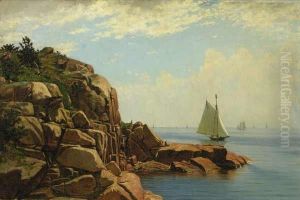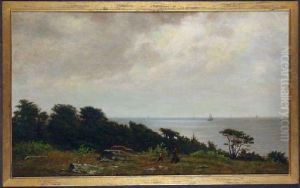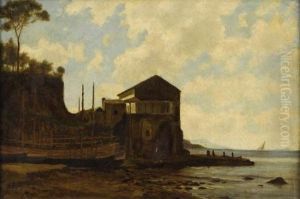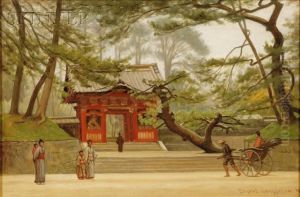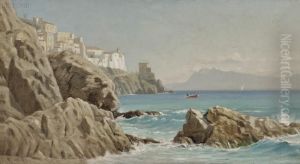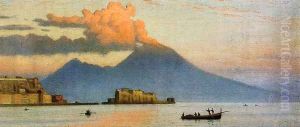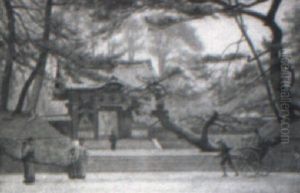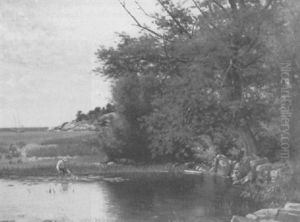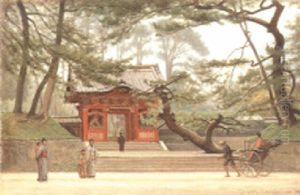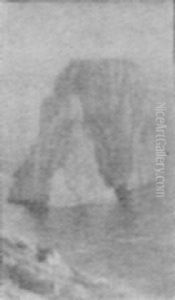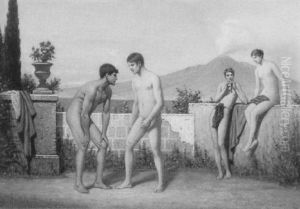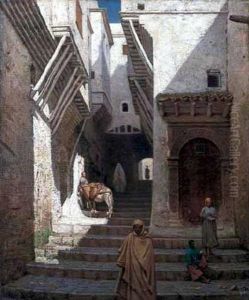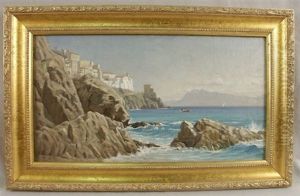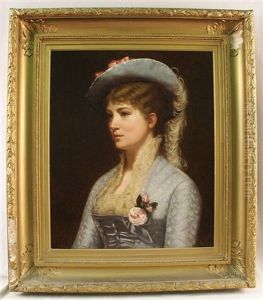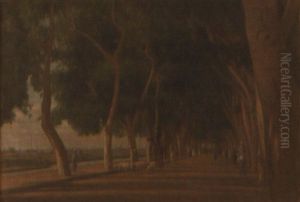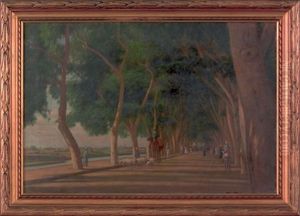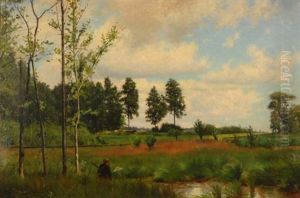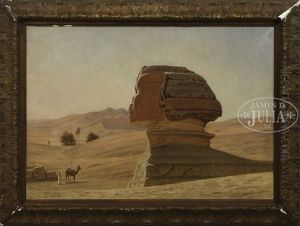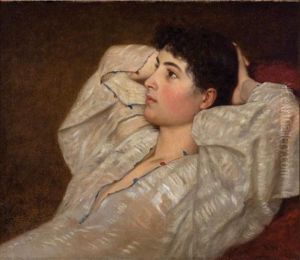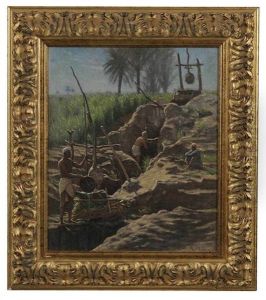Ernest Wadsworth Longfellow Paintings
Ernest Wadsworth Longfellow was born on November 23, 1845, in Cambridge, Massachusetts, USA, into a family rich in cultural and intellectual heritage. He was the second son of the famed American poet Henry Wadsworth Longfellow and his wife, Frances Appleton Longfellow. Growing up in a stimulating environment that encouraged creativity and learning, Ernest was exposed to the arts and literature from a young age, which played a significant role in shaping his career path as an artist.
Despite the literary fame of his family, Ernest pursued a career in the visual arts, showing a strong inclination and talent for painting. He studied under several prominent artists of his time, including the French landscape painter Léon Bonnat, which allowed him to develop a solid foundation in the techniques and styles of European painting. This education was crucial in establishing his reputation as a skilled painter.
Throughout his career, Ernest Wadsworth Longfellow focused primarily on landscape and portrait painting. His works were noted for their detailed realism and sensitivity to light and atmosphere, qualities that reflected the influence of his European training as well as the American artistic trends of his time. Despite living in the shadow of his father's literary legacy, Ernest managed to carve out his own niche in the art world, participating in numerous exhibitions and gaining recognition among his contemporaries.
Ernest's personal life and career were deeply intertwined with the cultural milieu of New England, where he spent most of his life. He was an active member of the artistic community in Boston and contributed to its cultural life through his participation in the Boston Art Club and other organizations. His works are part of several collections and have been displayed in various exhibitions dedicated to American art of the 19th and early 20th centuries.
Ernest Wadsworth Longfellow passed away on April 21, 1921, in Gloucester, Massachusetts. Though perhaps not as widely remembered as his father, Ernest's contributions to American art have been appreciated by art historians and collectors alike. His legacy is that of an accomplished painter who successfully navigated the expectations of his famous lineage to establish a distinct and respected artistic identity.
